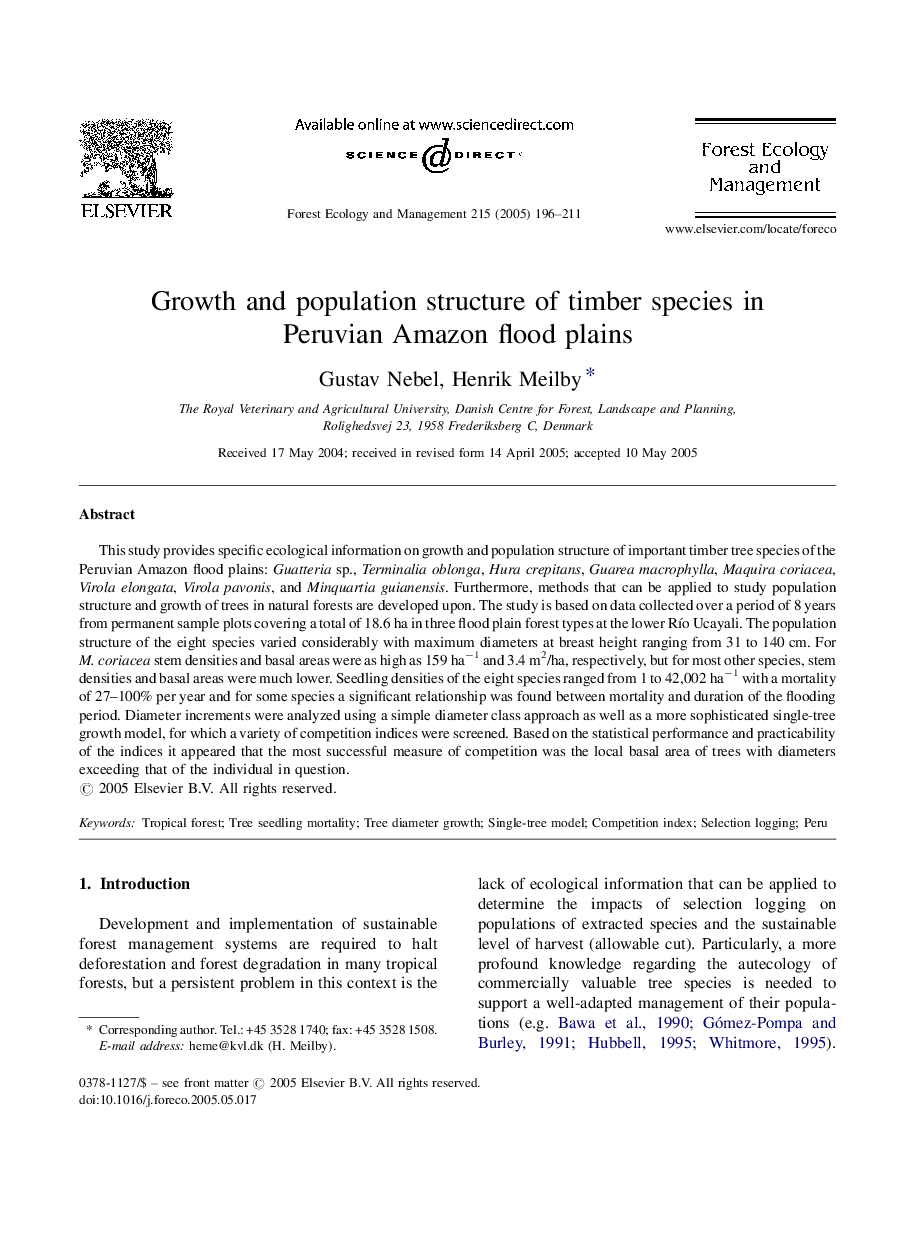| Article ID | Journal | Published Year | Pages | File Type |
|---|---|---|---|---|
| 9620208 | Forest Ecology and Management | 2005 | 16 Pages |
Abstract
This study provides specific ecological information on growth and population structure of important timber tree species of the Peruvian Amazon flood plains: Guatteria sp., Terminalia oblonga, Hura crepitans, Guarea macrophylla, Maquira coriacea, Virola elongata, Virola pavonis, and Minquartia guianensis. Furthermore, methods that can be applied to study population structure and growth of trees in natural forests are developed upon. The study is based on data collected over a period of 8 years from permanent sample plots covering a total of 18.6Â ha in three flood plain forest types at the lower RÃo Ucayali. The population structure of the eight species varied considerably with maximum diameters at breast height ranging from 31 to 140Â cm. For M. coriacea stem densities and basal areas were as high as 159Â haâ1 and 3.4Â m2/ha, respectively, but for most other species, stem densities and basal areas were much lower. Seedling densities of the eight species ranged from 1 to 42,002Â haâ1 with a mortality of 27-100% per year and for some species a significant relationship was found between mortality and duration of the flooding period. Diameter increments were analyzed using a simple diameter class approach as well as a more sophisticated single-tree growth model, for which a variety of competition indices were screened. Based on the statistical performance and practicability of the indices it appeared that the most successful measure of competition was the local basal area of trees with diameters exceeding that of the individual in question.
Keywords
Related Topics
Life Sciences
Agricultural and Biological Sciences
Ecology, Evolution, Behavior and Systematics
Authors
Gustav Nebel, Henrik Meilby,
